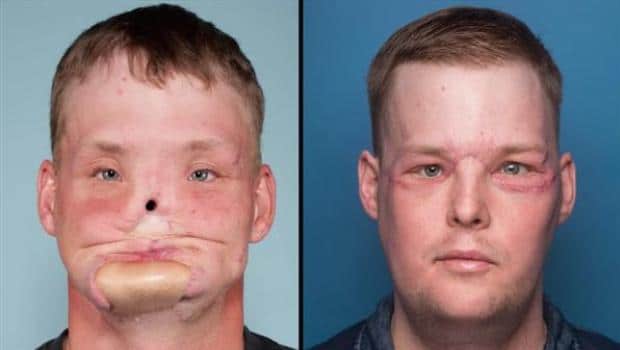A restorative group from the Mayo Clinic in Rochester, Minnesota has effectively finished a facial transplant for 32-year-old patient Andrew Sandness. The unimaginably complex technique, which required more than 50 hours of surgery, was made conceivable to a limited extent because of 3D printing advances, which were utilized to deliver 3D models and surgical aides.
In 2006, 21-year-old Wyoming-conceived Andrew Sandness was extremely harmed by a self-exacted shot injury to the face. The young fellow, who luckily survived the suicide endeavor, was left genuinely distorted. For a considerable length of time, Sandness has lived with his damage, which had made regular assignments, for example, talking, biting, noticing, and notwithstanding breathing exceptionally troublesome for the now 32-year-old.
As of late, nonetheless, Sandness experienced a close aggregate facial transplant which has improved his life. As he commented, “I am totally flabbergasted at the result up until this point. I am currently ready to bite and eat typical nourishment, and the nerve sensation is gradually enhancing, as well. My certainty has enhanced, and I’m feeling great―and appreciative.”
As one can envision, facial transplants are no simple deed, and the technique required broad arranging. This, as the Mayo Clinic clarifies, included virtual surgical arranging and also 3D printed models and aides. As Dr. Mardini clarifies: “Utilizing this innovation of 3d displaying, printing, and virtual surgical arranging is amazingly advantageous. [Medical demonstrating engineers] would have cutting aides for us that we would cut on the bones that would give us the correct area of the cut, the correct point of the cut, so that when we took the giver’s face and put it on the beneficiary it would fit splendidly.”
In view of the condition of Sandness’ face, the surgery required various medicinal procedures, including remaking and reestablishing the patient’s nose, upper and lower jaw, sense of taste, teeth, cheeks, facial muscles, salivary organs, skin, and that’s only the tip of the iceberg. The surgery, which was started in summer 2016, endured more than 50 hours and required cooperation from nine specialists and 40 medical caretakers. Like I stated, no little deed.
The perplexing technique was performed by a multi-disciplinary group drove by Samir Mardini, M.D. furthermore, Hatem Amer, M.D., and comprised of authorities from plastic and reconstructive surgery, transplant medication, neurology, ophthalmology, dermatology, radiology, basic care, anesthesia, psychiatry, and numerous more fields. Sandness’ methodology denoted the main facial transplant surgery for the Mayo Clinic Essam and Dalal Obaid Center for Reconstructive Transplant Surgery.
